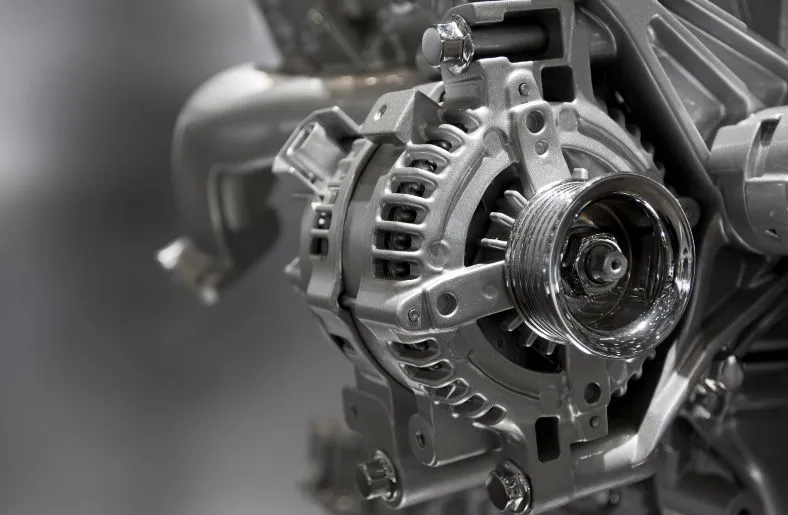As an avid car enthusiast, I have always been fascinated by the inner workings of internal combustion (IC) engines. One crucial aspect that ensures the smooth operation and longevity of these engines is the lubrication system.
In this comprehensive guide, I will walk you through the different types of lubrication systems in IC engines and their importance.
Table of Contents
Importance of lubrication in IC engines
Lubrication plays a vital role in the performance and durability of IC engines. The primary function of a lubricant is to reduce friction between moving parts, preventing wear and tear. Additionally, it helps dissipate heat, improves fuel efficiency, and minimizes the risk of engine failure.
Without proper lubrication, the metal components in an engine would grind against each other, leading to excessive heat generation and eventual breakdown. Therefore, choosing the right lubrication system is crucial for ensuring optimal engine performance and longevity.
Types of lubrication systems in IC engines
Splash lubrication system
The splash lubrication system is the simplest and most commonly used in small, low-powered engines. This system relies on the rotation of the crankshaft to splash oil onto the engine components. As the crankshaft spins, it dips into a pool of oil, which is then flung onto the cylinder walls, pistons, and other moving parts.
The oil is then collected in a sump and recirculated through the system. While this system is cost-effective and easy to maintain, it may not be suitable for high-performance engines due to its limited oil distribution and potential for oil starvation during high-speed operation.
Pressure lubrication system
The pressure lubrication system is the preferred choice for most modern IC engines, especially those with high power outputs. This system uses an oil pump to circulate oil under pressure to various engine components.
The oil is filtered before being pressurized and directed to the main bearings, connecting rod bearings, camshaft, and other critical areas. By maintaining a constant supply of oil, the pressure lubrication system ensures that all engine parts receive adequate lubrication, even under extreme operating conditions. It also allows for better control over oil flow, making it suitable for engines with varying loads and speeds.
Dry sump lubrication system
The dry sump lubrication system is commonly found in high-performance and racing engines. Unlike the traditional wet sump system, which stores oil in a pan located at the bottom of the engine, the dry-sump system uses an external oil reservoir. This design allows for a lower engine profile and better weight distribution, making it ideal for performance-oriented applications.
The oil is drawn from the reservoir by an external pump and circulated through the engine. Excess oil is then collected in the reservoir, preventing oil starvation during high-speed cornering or acceleration. While more complex and expensive to install, the dry-sump system offers superior oil control and is highly efficient at removing heat from the engine.
Related Guide: All about Valvoline MaxLife Synthetic Blend Oil Change Intervals? (2024)
Mist lubrication system
The mist lubrication system is commonly used in two-stroke IC engines, such as those found in motorcycles and small power tools. This system relies on a mixture of oil and fuel, which is injected into the engine’s intake tract. As the fuel-air mixture enters the combustion chamber, the oil droplets vaporize, forming a lubricating mist that coats the engine components.
The mist lubrication system is simple, lightweight, and provides excellent lubrication to the engine’s moving parts. However, it requires careful tuning to ensure the correct oil-to-fuel ratio and may result in increased emissions.
Forced-feed lubrication system
The forced-feed lubrication system is typically employed in large industrial engines and heavy-duty applications. This system uses a pump to deliver oil under high pressure to the engine components. The oil is filtered and cooled before being pressurized and circulated through the engine.
The forced-feed system ensures a constant and reliable supply of oil, even in harsh operating conditions. It is designed to handle heavy loads and extended running times, making it suitable for engines used in industries such as marine, power generation, and mining.
Conclusion
Having explored the different types of lubrication systems in IC engines, we now understand their importance in ensuring optimal engine performance and longevity. From the simple splash lubrication system to the sophisticated forced-feed system, each type has its advantages and considerations.
When selecting a lubrication system for your engine, consider factors such as power output, application, operating conditions, and budget. Additionally, proper maintenance and troubleshooting are necessary to keep the lubrication system functioning effectively.
By understanding the intricacies of lubrication systems, you can make informed decisions and ensure the smooth operation of your IC engine.

